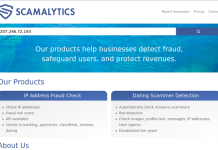
With the coronavirus pandemic turning the world on its head, video conferencing software has gained huge traction and has become almost essential to efficiently running a business and getting on with everyday work. The only problem is that given how fast the majority of people suddenly switched to this new medium from the comfortable offices they are used to, many of them are unfamiliar with the services and the different terms used to define them. One particular area of concern has been virtual meetings and webinars, the difference between the two and when to use one or the other. In order to help you understand the difference and get on your way to becoming a more effective remote worker, below we have highlighted those points so that you too can familiarise yourself with the new technology in use.
The actual difference
The difference is actually fairly straight forward and can be found within the names themselves. A virtual meeting is just that, a meeting conducted virtually online. Rather than gathering a group of people into a conference room, virtual meetings allow everyone to stay in their respective homes and join a virtual room where they can broadcast their camera and voice to each other with each member able to speak and participate in the conversation. A webinar, on the other hand, is the online equivalent to a regular seminar. They are rooms where many people can join to watch or listen to speakers, and while there is occasionally some audience interaction, for the most part only the speakers communicate.
When to use a virtual meeting
Virtual meetings are a great choice for any small to mid-sized collaboration project. They follow similar rules to in-person meetings, where too many people can lead to unruly behavior, interruptions, and a general lack of productivity. Virtual meetings work best for groups of under 20 people to gather to work together and while they may at first seem like a step backward from their in-person counterparts, virtual meetings and video conference calls actually have many advantages that help to make them efficient.
For example, there are plenty of tools available in the online world that can help share information, like screen sharing and virtual whiteboards, both of which make it easy to share data and discuss topics, almost better than if you were face to face with the rest of the meeting. There are also specialized zoom virtual backgrounds that help to maintain a professional appearance when working from home, where distractions in the background or sensitive information on show can be an issue. Pick through hundreds of options to find an ideal background for practically any occasion.
Finally, another great feature that virtual meetings offer is the ability to record your meetings. This not only makes for easier and more accurate note-taking, but it is also incredibly helpful to anyone who was unable to attend the meeting live. Recording it allows absentees to quickly and accurately keep up to date with current events.
When to use a webinar
While virtual meetings are used for small scale collaboration, webinars are ideal platforms to address large numbers of people. Most popular services allow you to broadcast to at least 500 people with some going much higher, making webinars the perfect format for presenting new products to the public or making a company-wide announcement. Hosts and speakers can share their knowledge and experience with people around the world, not limited to any geographical area or by the number of seats in any given event center.
If speakers want no interruptions, they can easily set it so the audience can only watch and listen to them, thus avoiding hecklers or unwanted interruptions. However, you can also do the opposite and get audience input in a variety of ways. For example, live polls, surveys, and text chat can all be used to provide audience interaction, whether it be for a specific reason or simply just to clear things up and answer questions regarding the topic at hand. While virtual meetings thrive on a small number of people participating, seminars are designed to function so as many people as possible can attend. A good example of a successful webinar would be TED talks that, while up until recently had a live audience in attendance, also broadcast around the world to great success.










